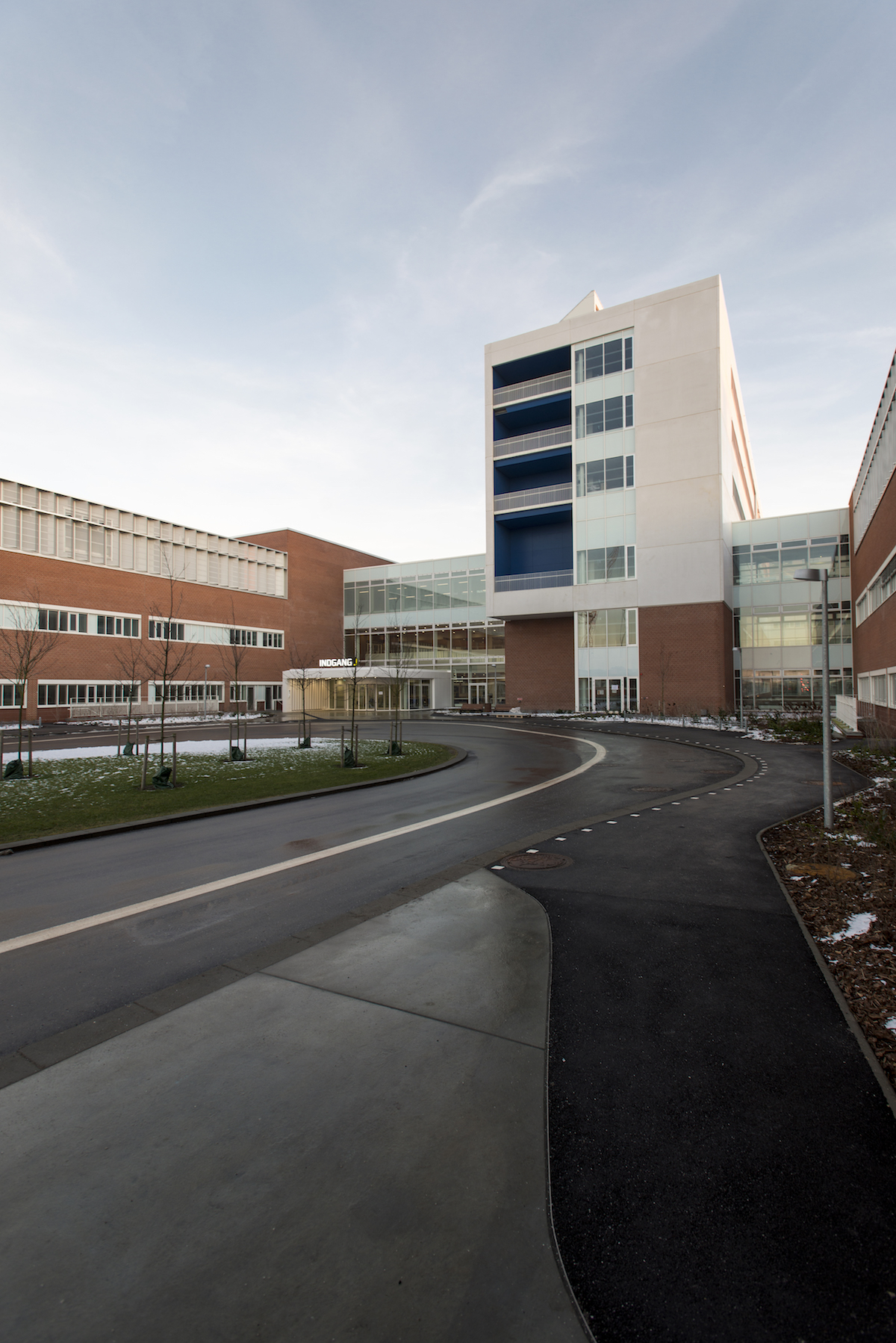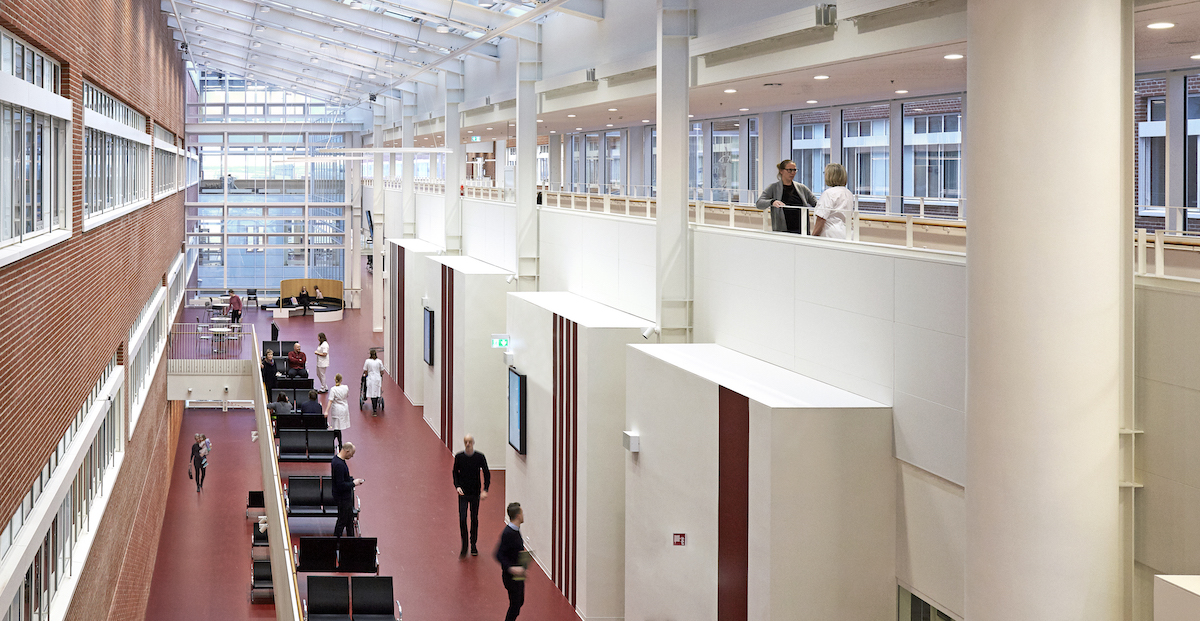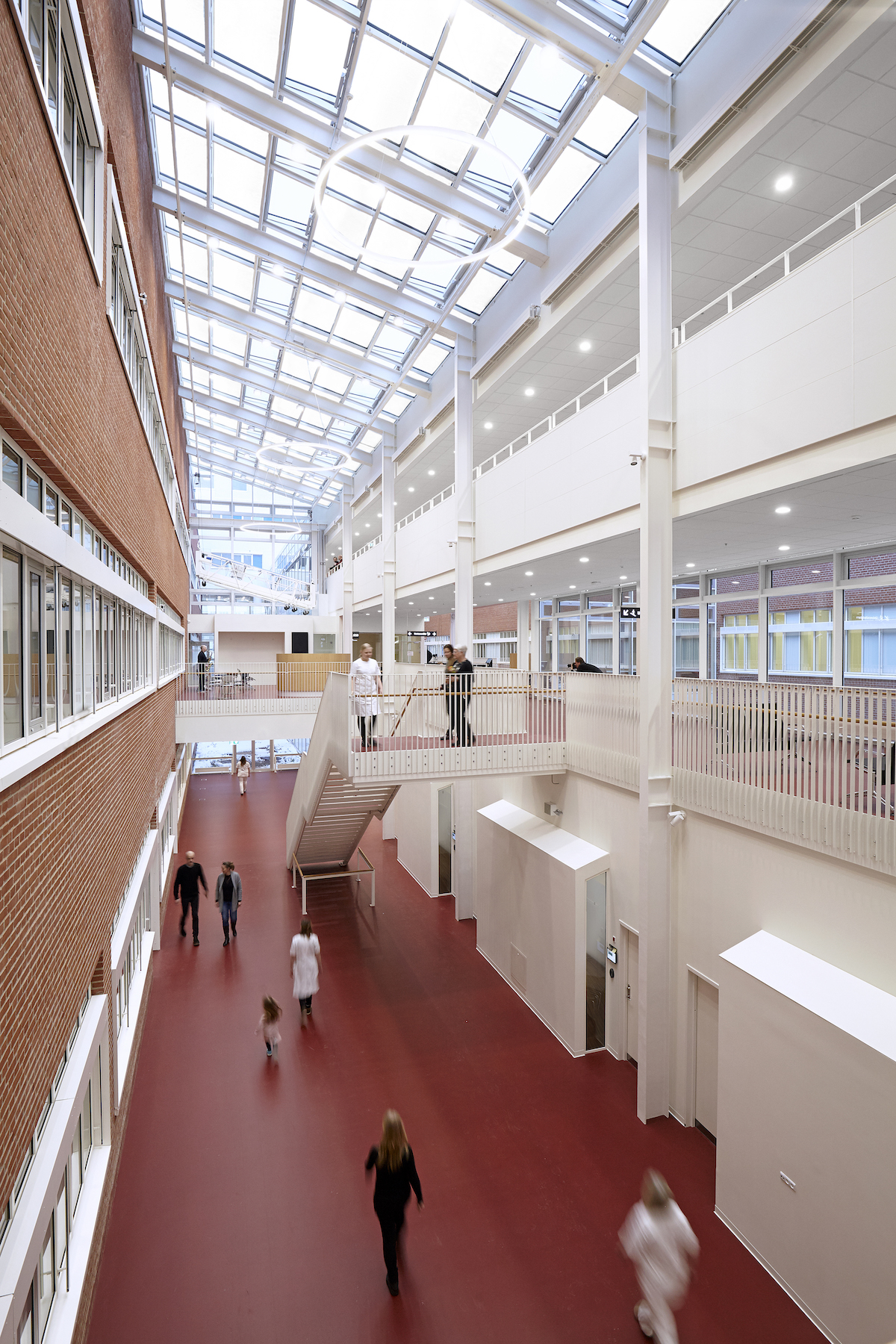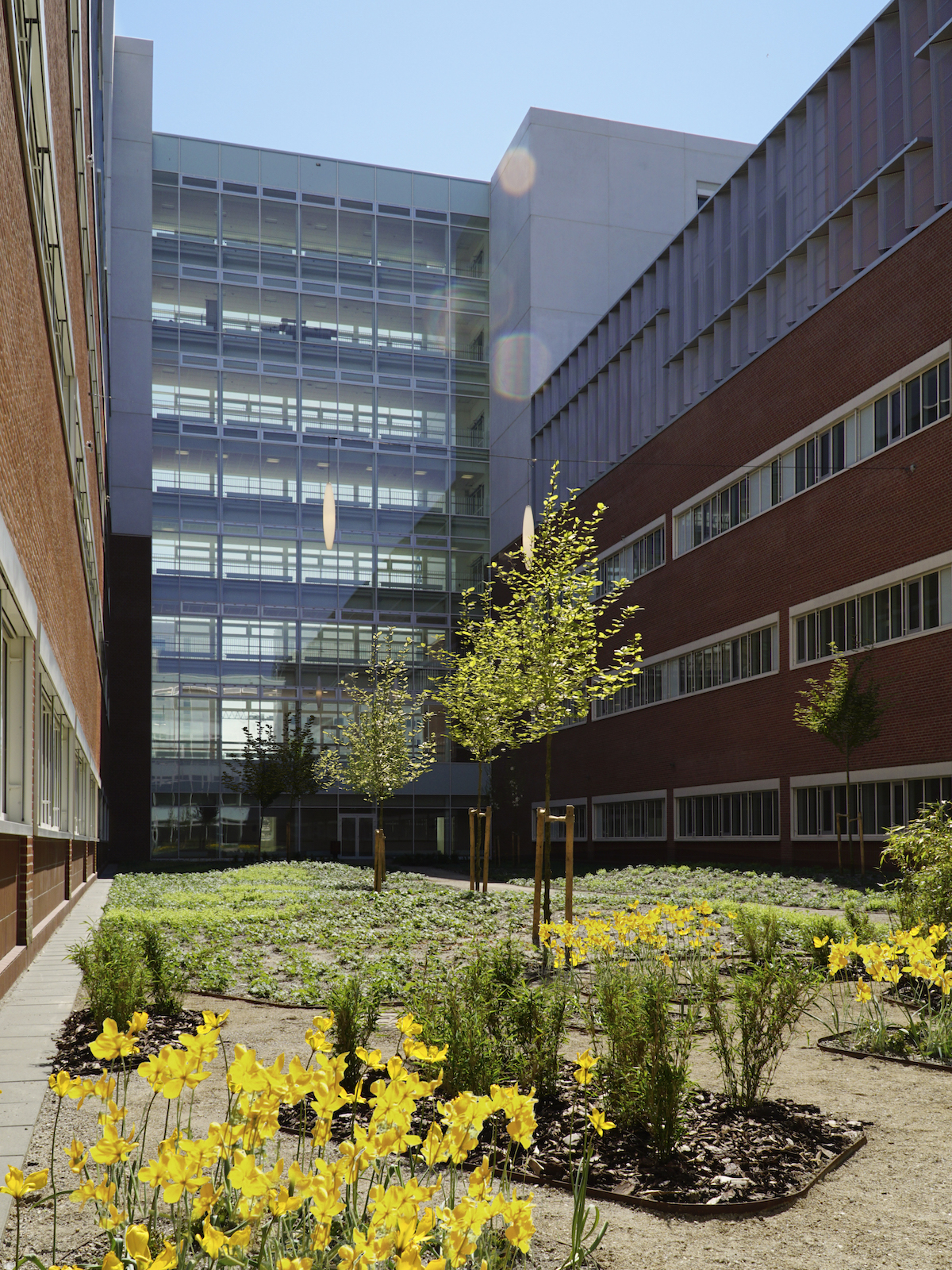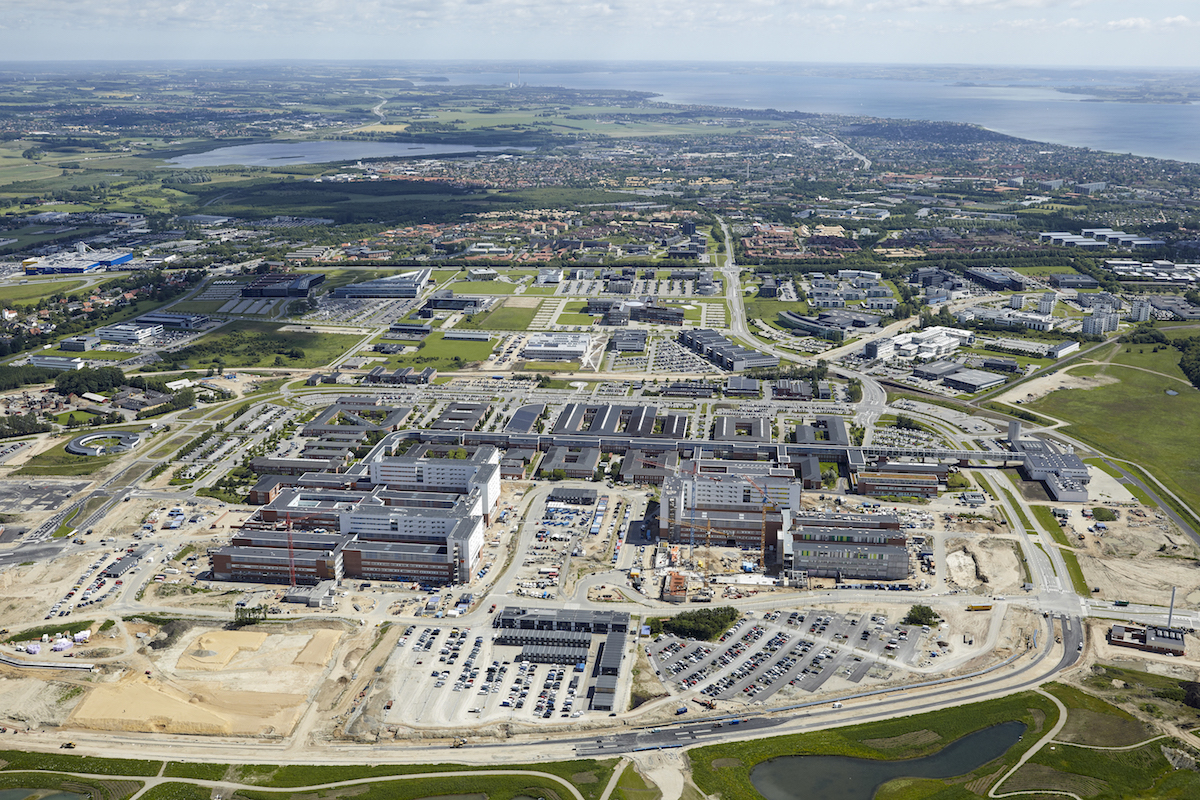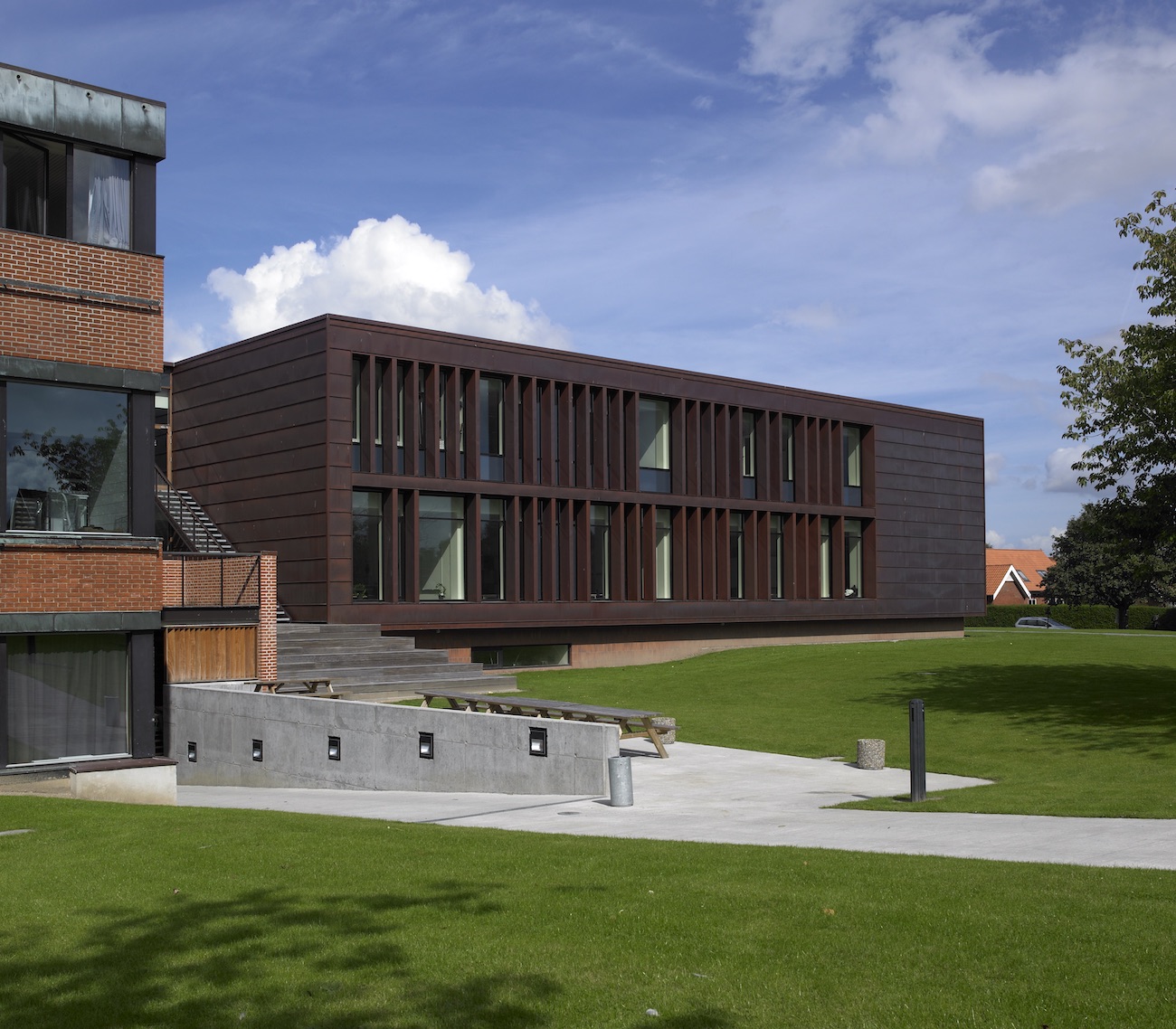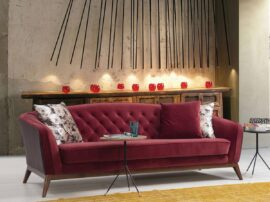The Emergency Centre, which is the first major element of the New University Hospital in Aarhus, is ready for use. This is a construction project for Denmark’s first super-hospital – an ultra-modern hospital that will be a pioneering project both in Denmark and internationally when it comes to the concept of “healing architecture” in the healthcare sector.
Systematic use of the working method called “Knowledge and Evidence-Based Design” has allowed the concept of “healing architecture” to influence every decision concerning the physical design of the hospital. From the layout of the single-bed wards, the use of daylight and the flow of light in all of the hospital’s rooms, to the design of the landscape and garden areas around the hospital.
The basic aim has been to meet as many as possible of the patients’ needs and requirements, promote the involvement of patients’ relatives, and ensure optimum working conditions and streamlined workflows for all employees.
A town in the town
The New University Hospital in Aarhus is being added to the existing Aarhus University Hospital in Skejby to create one overall hospital complex. The hospital will be as big as a Danish provincial town, with the same layout as an archetypical town, with an elevated, densely built-up centre.
The hospital complex is therefore structured as a town, with a hierarchy of quarters, streets, plazas and squares as the basis for a diverse and dynamic green urban centre, and it will serve as university hospital, regional centre and basic hospital for the region’s population.
The hospital is designed and organised to flexibly meet future requirements of technology, treatment methods and working methods.
People in focus
The architecture’s starting point is people, with the human scale as its measuring gauge. The structure of the new hospital not only ensures that patients and visitors can find their way around the complex, but also that they can settle down and help themselves in the hospital city.
The overall complex is divided into professional communities, each with their own identities. This ensures a clear structure, consisting of three primary elements: a two-storey base with treatment functions; the wards above the base up to a height of four storeys; and in the middle, the coming “Forum” central arrival area, where public functions are located at the foot of three multi-storey blocks. These include a main reception area, conference centre, shops, bank, cinema and other service functions surrounded by green areas.
Easy to find your way
The starting point for the structure of the New University Hospital was the existing hospital. The human scale is therefore retained in the base’s two-and three-storey redbrick buildings. The higher buildings in the centre are light, with coloured markings, to make way-finding easy. The overall harmonious balance between architecture, logistics, digital information platforms, art and landscape make it easy for patients and relatives to find their way around the hospital.
Healing hospital landscape
At the New University Hospital, patients, staff and visitors will have access to or views of the surrounding landscape and more proximate garden spaces.
Large, newly-established rainwater lakes will create densely vegetated, recreational meadow areas that are accessible for the hospital’s users and local residents. Car park areas will be connected with trees. The hospital’s many large courtyard spaces are designed as fertile, green gardens, inspired by unicellular animals and pollen – the smallest forms of life in the great hospital.
The gardens fulfil patients’ need for calm, recreation and restitution close to the individual hospital departments, and offer spaces for relatives and staff to pause for thought and rest.
The New University Hospital is a low-energy building design, which in addition features 3.300 m2 of solar cells delivering approx. half a million kWh of power per year, a refined sustainable urban drainage concept which includes 18 ha of new public landscape with woods and lakes, and an innovative new concept for pre-purifying wastewater from the hospital to filter out medical residues.
C.F. Møller, Cubo Architects and landscape architects Schønherr, as well as Rambøll, Alectia and Søren Jensen Rådgivende Ingeniørfirma, won this project in an international project competition held in 2007.
Scope
The hospital city’s total size: 500,000 m²
216,000 m² new construction, 159,000 m² conversion = 375,000 m², site: around 970,000 m². 797 beds, 43 dialysis places, 80 hotel beds.
Construction period
2009-2020
The first phase was officially opened on 27 February 2017. The next phases will be achieved on an ongoing basis, and the full project is expected to be completed in 2020.
What is Knowledge and Evidence-Based Design?
Knowledge and Evidence-Based Design at the New University Hospital in Aarhus is about using the best information available from research and evaluation of previous construction projects to create optimum, healing architecture.
Project Information:
Client: Region Mid-Jutland
Address: Aarhus, Denmark
Architect: C.F. Møller in collaboration with Cubo Arkitekter
Landscape: Schønherr Landskab
Engineers: Rambøll, Alectia, Søren Jensen Rådgivende Ingeniørfirma,
Collaborators: Lohfert & Lohfert
Cost: 855 m €
Prizes: 1st prize in international architectural competition, 2007
Photographer: Thomas Moelvig, Kristine Mengel, Poul Nyholm, Jacob Borg Damkjaer, Julian Weyer, Rafel Pruski

